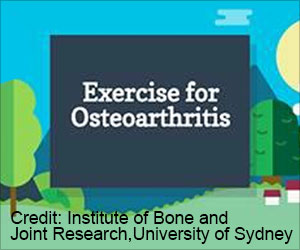A new study estimated the associations of body mass index with pain and the mediating role of inflammatory biomarkers in hand osteoarthritis.

‘The systemic effects of higher body mass index may play a larger role in mediating hand pain in osteoarthritis.’





Bodyweight is a modifiable risk factor for osteoarthritis pain, and weight loss may reduce pain, mechanical loading, and systemic inflammation.The mechanical loading caused by obesity does not have the same effects on hand joints as on the weight-bearing joints in lower extremities, hand joints are well suited to study the possible systemic effects of obesity on pain.
Overweight and obesity induce a low-grade inflammatory state as adipose tissue produces inflammatory biomarkers, which may affect pain mechanisms.
To examine the association of body mass index (BMI) with pain in people with hand osteoarthritis, researchers estimated associations between BMI and hand pain by Australian/Canadian Osteoarthritis Hand Index (AUSCAN, range 0-20) and Numerical Rating Scale (NRS, range 0-10), foot pain by NRS (range 0-10), knee/hip pain by Western Ontario/McMaster Universities Osteoarthritis Index (WOMAC, range 0-20), painful total body joint count and pain sensitization in 281 study participants.
The observed associations of body mass index with hand pain and total body joint pain seemed to involve certain inflammatory markers (leptin and high-sensitivity C-reactive protein, respectively).
Advertisement















